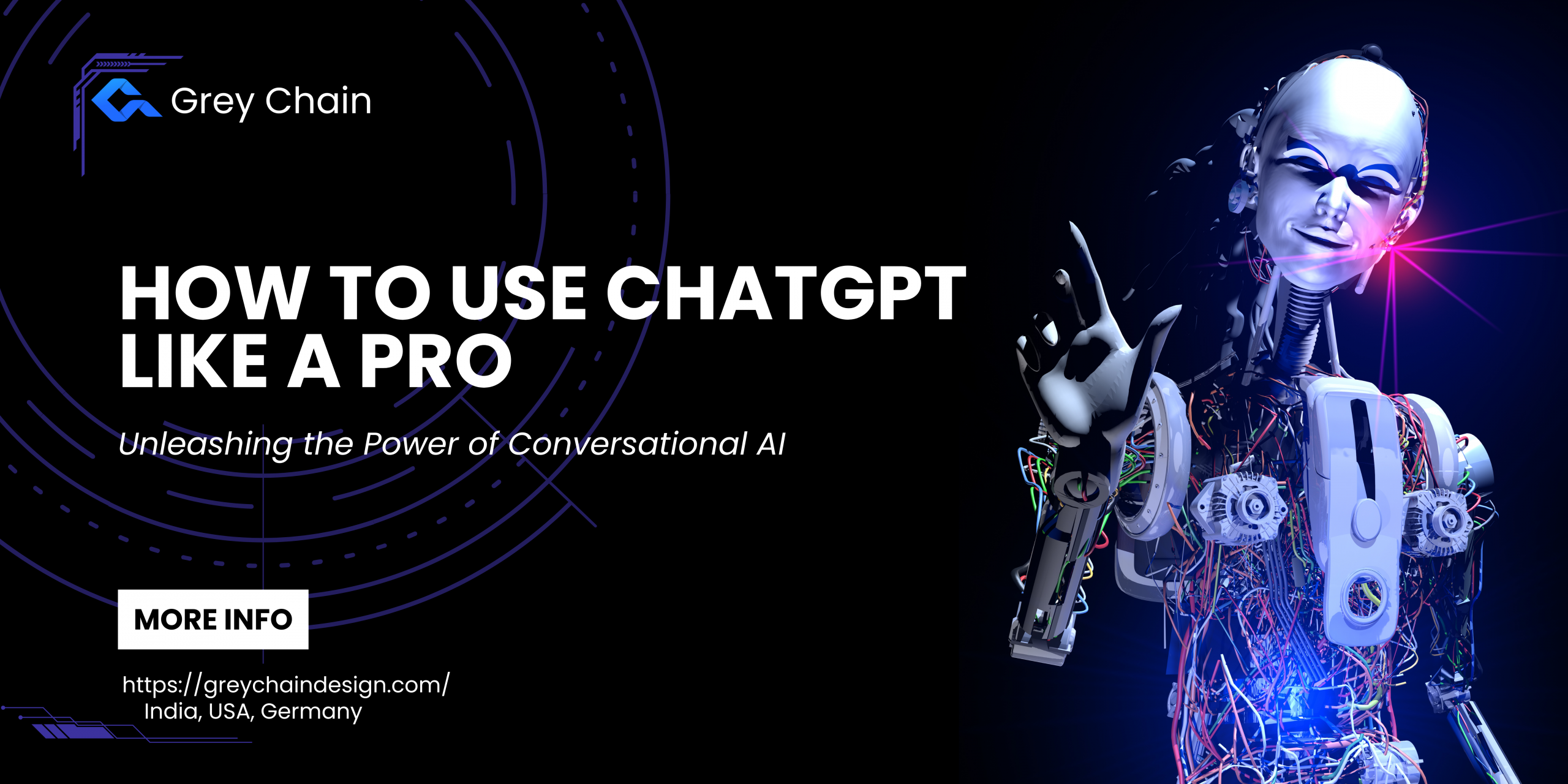How to Use ChatGPT Like a Pro: Unleashing the Power of Conversational AI
ChatGPT is a shining example of artificial intelligence’s transformational potential in natural language processing. After hitting 100 million active users in just two months,
ChatGPT broke the record for being the fastest app.
ChatGPT, created by OpenAI and driven by the sophisticated GPT-3.5 architecture, has developed into a flexible platform with uses spanning from customer assistance to content production and beyond.
It is a pillar in the era of conversational AI because of its significant influence on communication technologies and its capacity to understand and produce human-like text.
We’ll delve into the nuances of ChatGPT in this article, providing a systematic process for maximizing its capabilities.
Come on a journey to discover how to use ChatGPT like a pro and open up a world of opportunities in AI-driven dialogues.
The Growing Importance of ChatGPT
ChatGPT has changed the game in an era where communication technology is leading the way in innovation.
Its relevance comes from its capacity to comprehend and produce human-like writing, making it an adaptable tool for various businesses.
1.Content Creation
Creating content is one of the main uses for ChatGPT. ChatGPT may help with idea generation, language improvement, and general creative
enhancement—whether you’re a writer seeking inspiration, a marketer creating persuasive copy, or a student working on an essay.
2.Customer Support
Customer support systems are increasingly integrating ChatGPT to answer user inquiries promptly.
Its capacity to comprehend and react in natural language makes it a priceless tool for companies trying to improve their customer support offerings.
Within the next 12 months, 97% of business owners think ChatGPT will improve their operations.
3.Education
ChatGPT may act as a virtual tutor in education, delivering extra learning materials, clarifying things, and assisting students with their assignments.
Because of its versatility, it may be used for various academic levels and disciplines.
4.Software Development
ChatGPT can be a handy tool for software developers seeking assistance with coding-related queries. It can help generate code snippets, debug issues, and explain programming concepts.
Step-by-Step Guide to Using ChatGPT Like a Pro
Having grasped the various uses of ChatGPT, let’s proceed to a detailed tutorial on mastering this potent tool like a pro:
1. Accessing ChatGPT
Visit the OpenAI platform or use the API directly to begin your ChatGPT experience. Make sure your API credentials are set up before logging in.
Get familiar with the platform’s user-friendly interface, creating a smooth environment for successful engagement with ChatGPT.
Knowing how to use this potent conversational AI tool is the first step toward a more seamless and effective interaction.
2. Framing Your Prompt
The key to efficient ChatGPT communication is accurate, fast formulation. Give your demands or questions clearly and concisely, including the necessary context to aid in understanding.
Divide complex queries into more manageable chunks to improve ChatGPT’s comprehension.
By giving well-organized prompts, you may maximize the model’s capacity to produce precise and contextually appropriate replies.
This crucial step will guarantee a seamless and fruitful exchange and enable you to utilize ChatGPT’s sophisticated natural language processing features fully.
3. Experiment with Temperature and Max Tokens
To improve ChatGPT’s output, experimenting with temperature and maximum tokens is essential. The temperature range of 0.2 to 1.0 determines the unpredictability of the reaction.
Lower numbers, like 0.2, provide more concentrated reactions, while larger values, like 0.8, inject more variability.
Max tokens work by imposing a time restriction on responses, encouraging the development of concise and precise responses.
Users may precisely customize ChatGPT’s output to suit their tastes and have a more sophisticated and productive conversational AI experience by deftly modifying these settings.
4. Iterative Refinement
Using ChatGPT is an iterative process. If the first response doesn’t meet your expectations, don’t hesitate to change your request.
This iterative approach improves ChatGPT’s knowledge by adding context, rephrasing inquiries, or giving clear directions.
Iteration and fine-tuning capabilities guarantee that successive replies are more closely aligned with your goals, eventually resulting in more accurate and pertinent outputs.
This flexibility allows users to take charge of the interaction and improve it, which maximizes ChatGPT’s potential to provide useful and contextually relevant material.
5. Incorporate System and User Instructions
Put specific instructions inside your prompts to control ChatGPT’s answers. Indicate the structure you want answers to take, ask for detailed thought, or provide direction so that answers match your needs precisely.
You may improve control over ChatGPT’s output by skillfully integrating system and user commands. This guarantees that ChatGPT responds to your specific requirements and preferences.
By taking this step, you may influence the AI’s behavior and improve the precision and relevancy of the outcomes of your interactions.
6. Limit Response Length
You can modify ChatGPT’s response time by using a maximum token limit. This capability comes in handy when there are space restrictions or when providing succinct responses is needed.
Try out different token limitations to find the ideal equilibrium so ChatGPT can provide you with the most efficient and concise answers for your needs.
This is an important step to fine-tune the user experience and get the data or content you want from this flexible conversational AI tool.
7. Experiment with Prompts and Outputs
The key to effectively using ChatGPT is experimentation. Take an experimental approach by experimenting with different prompts and assessing the produced results.
Understanding how the model responds to various inputs through this iterative process will help you fine-tune your strategy and get the desired outcomes.
Whether you’re looking for instructional insights, technical support, or creative material, experimenting with prompts and outputs allows you to fully utilize
ChatGPT and customize its replies to meet your needs.
What Is Generative AI: Linking With ChatGPT
ChatGPT is one of the best examples of generative AI, a term used to describe models that can produce fresh text, graphics, or other types of data.
Large datasets are used to train these models, which imitate the patterns seen in the training data to provide realistic and appropriate outputs for the given environment.
Understanding GPT Architecture
An example of a transformer-based neural network architecture is the Generative Pre-trained Transformer (GPT).
It is particularly good at deciphering relationships and context inside the data it analyzes. Because the GPT model has undergone pre-training on various datasets,
it does not require task-specific training and can be used for a broad range of applications.
ChatGPT’s Contribution to Generative AI
The GPT architecture’s capabilities are customized for conversational interactions by ChatGPT. Because of this, it can comprehend and produce writing in a dialogical manner similar to a person’s. The constant progress in generative AI, as demonstrated by ChatGPT, represents a fundamental change in how we use and engage with AI.
Mastering ChatGPT: Elevate Your Conversational AI Expertise to Pro Levels
In conclusion, ChatGPT has developed into a vital tool in our technologically advanced society. It has a huge potential and a wide range of uses.
Recognizing the efforts of companies like OpenAI and their partners in creating and implementing such innovative technology is crucial as we work through the challenges of generative AI.
One of the major companies in the AI space, Grey Chain Technologies, has led the way in utilizing generative AI for practical uses.
Their proficiency in implementing ChatGPT-powered solutions demonstrates their dedication to pushing the envelope of innovation.
It is crucial to comprehend and use technologies like ChatGPT as artificial intelligence (AI) continues to advance and become increasingly integrated into our daily lives.
By using them responsibly and strategically, we can fully realize these technologies’ revolutionary promise and open the door to a more productive, innovative, and connected future.

 Get in Touch
Get in Touch
